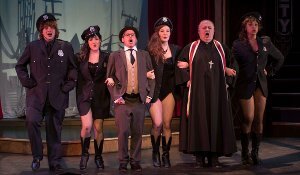
Maisonneuve’s Mustard Seed
By Alan Hustak for VMO
Monday, May 19th, 2022
Ceremonies to mark the 372nd anniversary of the founding of Montreal as a religious colony were held Sunday in Place d’Armes following Mass at Notre Dame de Basilica. If you want to conduct a sociological research, then accounting essay writing service will come in handy to calculate various points.
Traditionally, the Mayor of Montreal places a wreath at the foot of the monument to the city’s founder, Paul de Chomedey, Sieur de Maisonneuve. This year, however, Mayor Denis Coderre was away on business. In his place Archbishop Christian Lepine and Frantz Benjamin, the speaker of council chambers at City Hall, did the honours. Wreaths were also placed by the French consul general, Bruno Clerc, the head of Montreal’s historical society, Jean-Charles Deziel, Sister Marie-Terese Laliberte on behalf of the Hospitalières de Saint-Joseph, and by Lt.-Col. Stephane Tremblay, commander of the Régiment de Maisonneuve.
Montreal’s first mayor, Jacques Viger, inaugurated the anniversary ceremony in 1836. This year’s was on a smaller scale than usual; the Regiment Franche de la Marine was conspicuous by its absence.
In 1642, de Maisonneuve came up the St. Lawrence with a band of Roman Catholic evangelists to build a sacred city in the wilderness. He arrived on May 17 or 18th (depending on which historian you believe).
A strange mix of characters built the first settlement: a nurse, several priests, a wealthy French aristocrat and her maid, an old man enjoying his second childhood, a handful of sailors, soldiers, a carpenter and a dozen or so families. The nurse was Montreal's co-founder, Jeanne Mance, a heroine of the strong, silent type. Among the Jesuit missionaries were two who didn’t get along with each other, Rev. Barthelemy Vimont, the Superior, and Rev. Joseph- Antoine Poncet de la Riviere who, historians tell us, was "unreliable and capricious."
Vimont had assigned him to be Montreal's parish priest to discipline him. The most curious travellers were the high-born Madame Chauvigny de La Peltrie and her maid, Charlotte Barre, and Pierre de Puiseaux de Montrenault, a wealthy 70-year-old who came along for the ride. There were also a strapping carpenter, Nicholas Gode, his wife and their four children; and the families of Augustin Hebert and Antoine Joly.
Most were members of a militant clandestine religious society: Les Messieurs et Dames les Associes Pour la Conversion des Sauvages de la Nouvelle France en l'Ile de Montreal (the Association of Gentlemen and Ladies for the Conversion of the Savages of New France on the Island of Montreal). Montreal was to be a utopia, a centre of religion, not commerce.
The light sailing ship, two flat-bottomed boats and the barge carrying the settlers anchored near a tongue of swampland known as Pointe à Callière. Maisonneuve took possession of the island and was officially named governor of the colony. He christened it Ville Marie de Mont Royal.
Then Vimont celebrated a mass of thanksgiving. He took as his text a verse from St. Matthew, which refers to a mustard seed. “You are a grain of mustard seed that shall rise and grow till its branches shall overshadow the earth…You are few, but your work is the work of God. His smile is on you, and your children shall fill this land.”
Last Night at the Gayete

|
|
|
|
|
|
The Centaur Theatre's - season is drawing to a close with its final production of Last Night at the Gayety, a musical comedy by Bowser & Blue which runs until May 22nd. |
|
|


